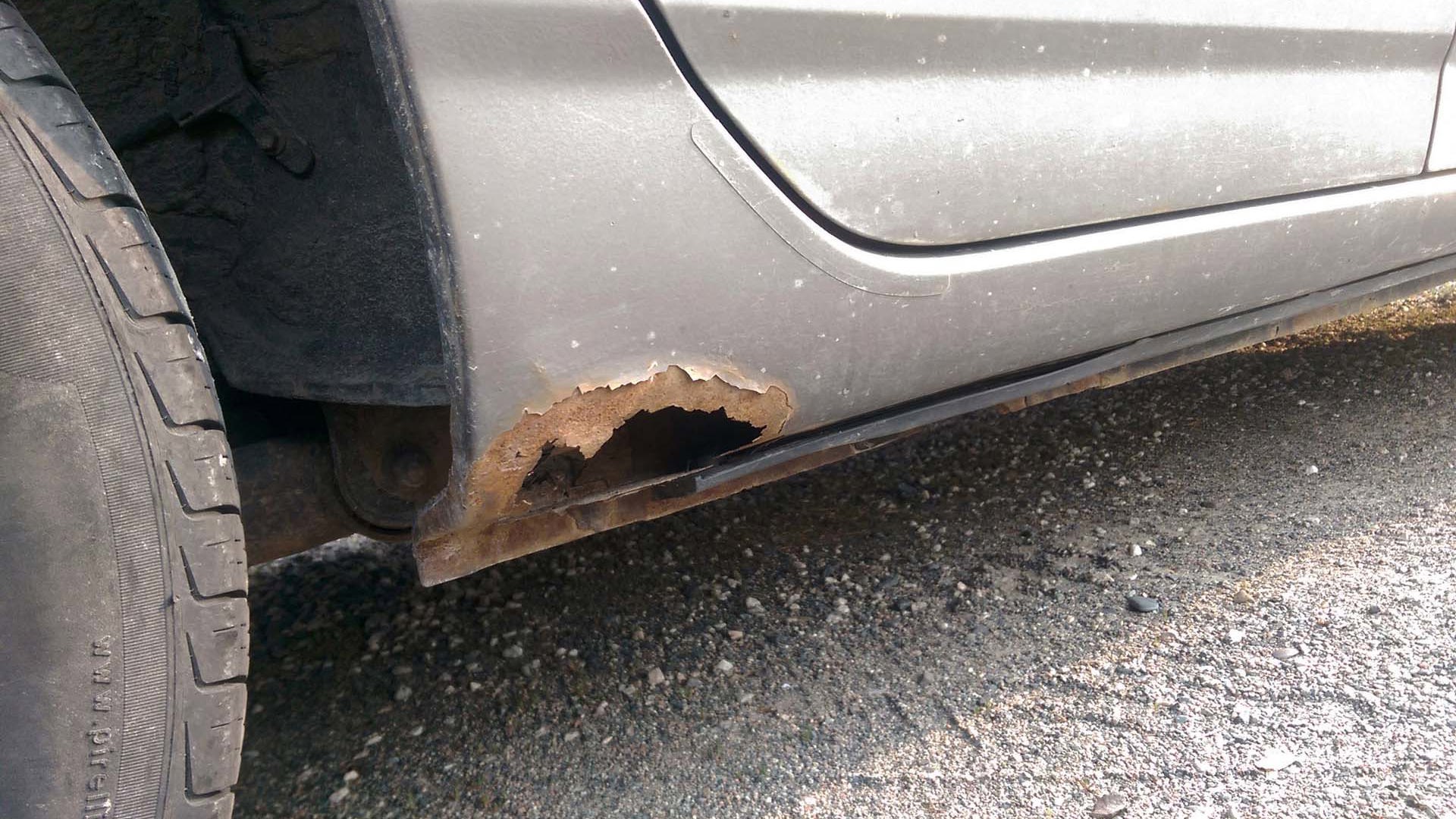Welcome to Goof of the Month! Every month, we ask for stories from our technician pals which highlight the need to understand one’s vehicle, how to maintain it, and how it works.
This month’s story comes to us from Jeff Major, a body man and collision repair tech in Sudbury, Ontario. In a little break from our usual format, we’re not focusing on one customer or one complaint, but rather a trend in the marketplace that’s seeing plenty of shoppers wasting their hard-earned money on a questionable product, according to Major.
In this month’s instalment, from the perspective of a collision repair technician, we’ll look at rust control modules: which are commonly sold to new-car shoppers as an extra-cost add-on to prevent rust on vehicles. According to Major, the effectiveness of these modules is sketchy at best, though shoppers continue to drop hundreds of dollars on them.
The Complaint

Major reports that he’s seeing more vehicles than ever in his shop with electronic rust modules installed, yet, the supposedly protected vehicles still have rust present, sometimes in significant amounts.
“I had a customer in for a body repair, and he came into my bay to get something out of his car while his front fender was off,” Major says.
“I didn’t know the customer had a rust module installed to this car, and when he saw that the surface beneath his fender was rusted fairly significantly, he was pretty upset. A few weeks later, I found out this customer tried to make a warranty claim against the module manufacturer for rust, and was denied.”
Though the surface of the paint-job on this particular vehicle looked fine, rust was forming beneath it, where it’s hard to see. At some point, this customer had given his dealer hundreds of dollars for enhanced rust protection, and his vehicle was rusting nonetheless.
This is one of many examples Major and his co-workers see on a near-daily basis while they get up close and personal with the bodies of cars, new and old.
Major provided another example, with photos, of a 2014 Honda Civic he worked on recently. The car had less than 8,000 kilometers of use, had a rust module installed, and was already rusting. “This car hasn’t even had its second oil change, and rust was starting to form.
“Seems like yet another total waste of money to me.”
The Body Man

Major figures that a large number of customers are wasting a large amount of money.
“It’s actually amazing how many of these modules we see,” Major comments. “After a few customer complaints, I now make it a point to look for the modules on every vehicle I’m working on. When I find one installed, it’s never hard to find rust on the vehicle. I have yet to see a vehicle with a rust module installed that isn’t rusting somewhere under its skin.”
The principle behind the modules is fairly simple. “In very simple terms, the principle these devices claim to work on is that they emit a low frequency electrical charge which, in turn is supposed to ‘repel’ or prevent rust from starting and spreading.”
“The science behind the modules is technically sound, and they’re used on machinery like oil tanker vessels, where they’re effective, because the entire vessel is solid steel, and submerged in water.”
So while the technology may be effective in a large sea-faring vessel, this seems less the case in an automobile.
“Even if correctly installed on an automobile, with one electrode affixed to steel contacts at the foremost part of the vehicle, and one at the rearmost part of the vehicle, protection is minimal – as many parts of a vehicle are isolated with rubber bushings and paint and primer, which insulate metal parts from electrical current,” Major says.
Installation quality may be part of the reason for the poor performance of rust modules Major has noted on automobiles.
“I’ve seen several examples where the electrodes for the module are attached to a painted surface with two-sided adhesive tape. There’s no connectivity there. Heck, I’ve even seen examples where the module electrodes themselves are rusting, which is hilarious. Or others, where the electrodes are both under the hood – even though they’re supposed to be located at opposite ends of the vehicle for maximum conductivity.”
The Outcome

Major says he’s now advising his customers and friends of his findings. “Whether it’s the installation, or the product itself, I’ve yet to see a rust module that seems to be doing its job,” he comments. “There are several factors at play; though whatever the reason, these things just don’t seem to work, plain and simple.”
Major says he hopes his story will convince shoppers to think twice before wasting hundreds on a product that doesn’t work as advertised.
Lesson Learned

When purchasing a new vehicle, shoppers are advised to use caution when deciding on enhanced rust protection. Consider the price of the rust module against the price of more proven rust prevention (like washing and undercoating), and the manufacturer warranty against corrosion. Note that your potential new vehicle’s advertised corrosion warranty doesn’t require an extra-cost add-on, and that nowadays, thanks to higher quality and more corrosion-resistant steel, vehicles tend to corrode much more slowly.
“The body of your vehicle needs maintenance to protect it from rust. A weekly exterior wash, being sure to clean door jambs, under the hood and trunk, and washing out caked on dirt from wheel wells, goes a long way. Annual oil sprays can protect steel or aluminum that has become exposed, too,” Major concludes.
“These simple tasks help your ride avoid pricey repair by a professional like me. And, in my extensive experience, rust modules don’t.”

